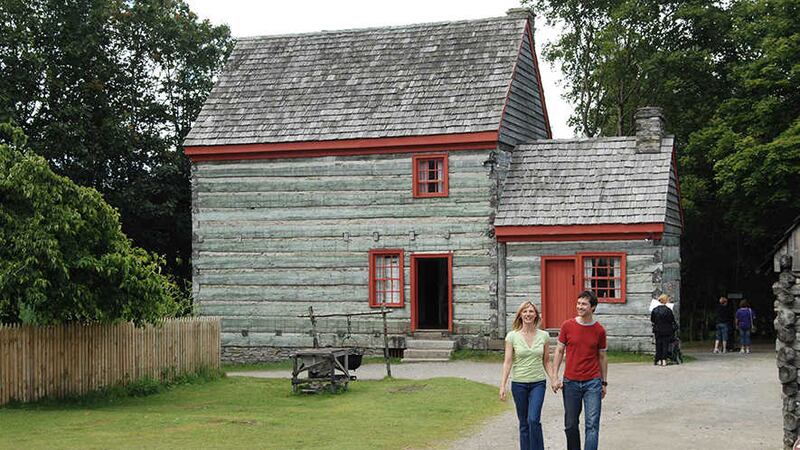The end of the housing bust has been officially declared, by much of the media at least, with the announcement of a 1,000 home development on the edge of Newtownards.
It is the largest scheme to start in Northern Ireland since private house building collapsed a decade ago. Other developments of a similar scale are in the works. So the building boom that defines our age is back - and apparently we are as indifferent as before to how it actually looks.
The Newtownards houses are being promoted as a “New England dream” because white clapboard cladding will be added to exterior walls. The cladding will be “timber effect” as maintaining real timber would be a pointless nightmare, although the development will still be called ‘Rivenwood’ rather than the more accurate ‘RivenUPVC’.
Yet Newtownards is not in New England, nor is there any comparable tradition of construction this side of the Ulster-American Folk Park. Rivenwood may be a high quality development of high specification houses but in appearance it will be as out of place as Thames Town, the English-themed suburb of Shanghai.
It is not as if Newtownards lacks a style of its own, a poor man’s Lisburn though it may be. Like most of urban Ireland it is substantially Victorian with a Georgian core. The surrounding countryside, like quite a lot of Ulster’s east coast, has an even older tradition of Scottish-influenced farmhouses and defensive plantation clachans - potential models for both the look and layout of new housing. There might be no such thing as an Ulster-Scots dictionary but there is such a thing as Ulster-Scots architecture and Rivenwood, on the Donaghadee side of Newtownards, juts into its Ards Peninsula heartland.
When new housing is in a rural area or the middle of a town, complementing local built heritage is the number one planning consideration. A bewildering array of rules at regional and policy level require the existing “character” of townscapes to be protected and even enhanced by the design of new buildings, in order to “reinforce civic pride and a sense of space”. In the countryside, planning guidance calls for site-specific designs based on “traditional buildings, local styles and local materials”.
However, there are effectively no rules on the aesthetics of suburban housing. All developments are meant to “draw upon the best local traditions of form, materials and detailing” but the planners clearly consider suburban plots to be a cultural blank slate, ‘local’ to neither town nor country. How else could Newtownards get a new New England, or any of our towns end up encircled with meaningless pastiches?
There is a planning presumption in favour of innovative architecture, which would be great if there was any widespread evidence of it happening. Unfortunately, good architecture is expensive and there is little incentive for developers to take that risk when they can keep affordable housing in permanently short supply.
There are also strong arguments against the planners being too prescriptive.
Above Newtownards stands Scrabo Tower, a classic Victorian attempt at bringing historic styles together in a new vernacular. It is fine as a one-off folly but otherwise it is literally a monument to bad taste. Real character has to emerge in a less forced fashion.
Perhaps the way we build now, UPVC included, is the tradition, form and detailing of the 21st century. Maybe our descendants will value our houses the way we value Georgian terraces, which were the mass-market suburbs of their day.
But there is a value in simple consistency that is being overlooked. Georgian buildings are bland but in exactly the same well-proportioned way. Victorian houses vary considerably but with enough common features to tie all the Victorian parts of a town together. Only a few buildings in central Belfast have a copper dome or spire but they mark out a zone with a unique style.
How do you bolt new housing onto the side of a town by modelling it on the other side of the Atlantic?
Suburban developments are fashionable targets for derision but they are the only practical way to give modern families the space, privacy and amenities they want - and the planners will not permit large scale house-building in town centres or the countryside regardless. New housing is also by far the most significant physical legacy we are leaving future generations.
It should not be beyond the wit of the planning system to encourage basic, honest design that extends civic pride and a sense of place beyond the ring road.









